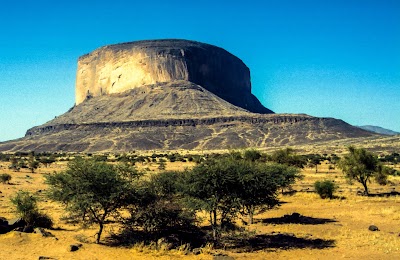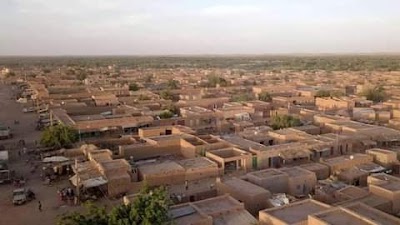Mount Hombori (جبل همبوري)
Overview
Introduction to Mount Hombori
Mount Hombori, known as جبل همبوري in Arabic, is the highest peak in Mali, rising majestically to an altitude of 1,155 meters (3,789 feet). Located in the Ménaka Region, this striking geographical feature is not only a haven for hikers and nature enthusiasts but also a cultural landmark steeped in the rich history of the local communities. Its rugged terrain and dramatic cliffs offer stunning panoramic views of the surrounding Sahelian landscape, making it a must-visit for travelers seeking both adventure and tranquility.
Natural Beauty and Biodiversity
The area around Mount Hombori is characterized by its unique flora and fauna, a product of the diverse ecosystems found at various elevations. As you ascend the mountain, you’ll encounter vibrant wildflowers, resilient shrubs, and even the occasional baobab tree, which is iconic to the region. Birdwatchers will delight in the variety of avian species that call this place home, including migratory birds that pass through during different seasons. The cooler temperatures at higher altitudes provide a refreshing contrast to the warm Sahel climate, making hiking a pleasurable experience.
Cultural Significance
Mount Hombori is not just a natural wonder; it holds great cultural significance for the local Tuareg and Songhai people. The mountain is often regarded as a sacred site, with numerous legends and stories intertwined with its presence. As you explore the area, you may come across traditional villages where you can learn about the customs, crafts, and daily lives of the inhabitants. Engaging with the local community provides a deeper understanding of the region’s history and the enduring connection between the people and their environment.
Adventure Activities
For the adventurous traveler, Mount Hombori offers a plethora of activities. Hiking trails vary in difficulty, catering to both seasoned trekkers and casual walkers. The most popular trail leads to the summit, where the reward is a breathtaking view of the vast desert landscape stretching to the horizon. For those looking for an adrenaline rush, rock climbing on the mountain’s sheer cliffs is an exhilarating option. Additionally, the surrounding region is perfect for exploring ancient rock art and archaeological sites that date back thousands of years.
Travel Tips
When planning your visit to Mount Hombori, it's essential to consider the best time to go. The cooler months from November to February are ideal, as temperatures are more manageable for outdoor activities. Ensure you have plenty of water, sunscreen, and sturdy footwear, as the terrain can be challenging. Local guides are highly recommended, not only for safety but also for their invaluable knowledge of the area. Engaging with a guide can enhance your experience, offering insights into the rich cultural heritage and natural wonders of Mount Hombori.
In summary, Mount Hombori is a captivating destination that promises adventure, cultural immersion, and stunning natural beauty. Whether you're scaling its heights, exploring the surrounding area, or engaging with the vibrant local community, a visit to this remarkable landmark will leave you with lasting memories and a deeper appreciation for the unique landscape of Mali.






